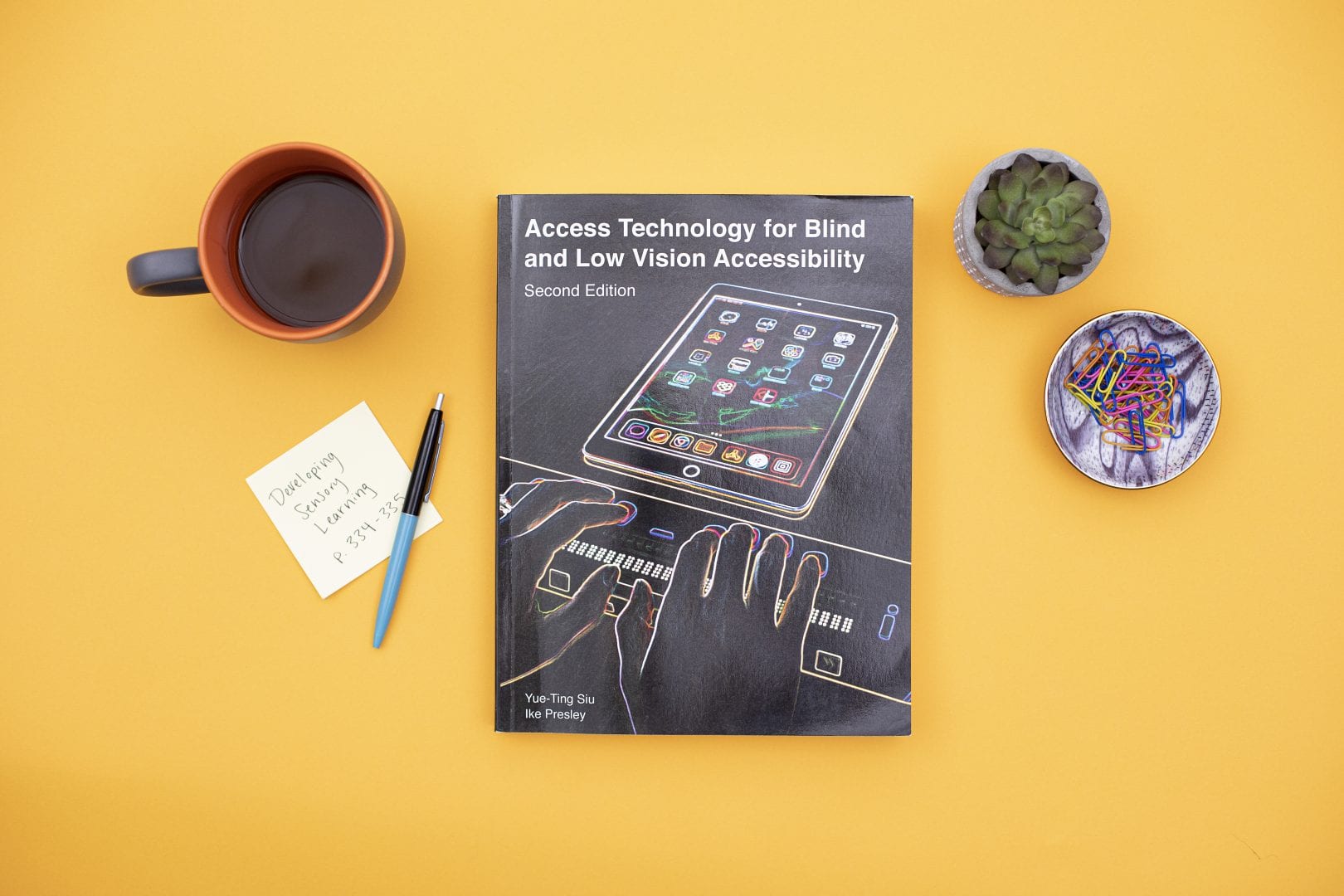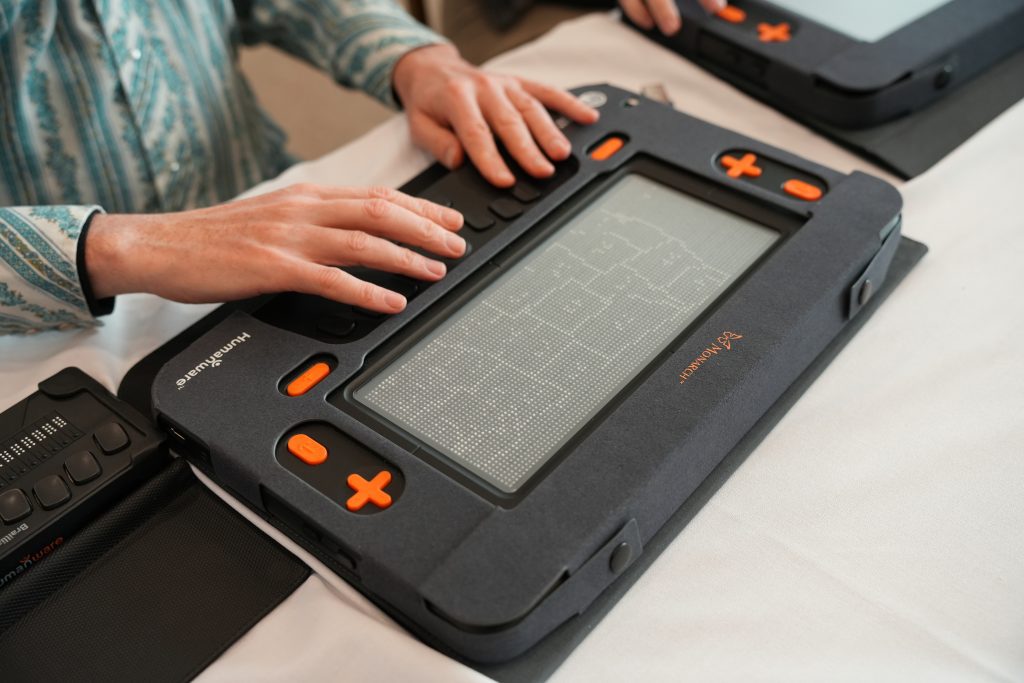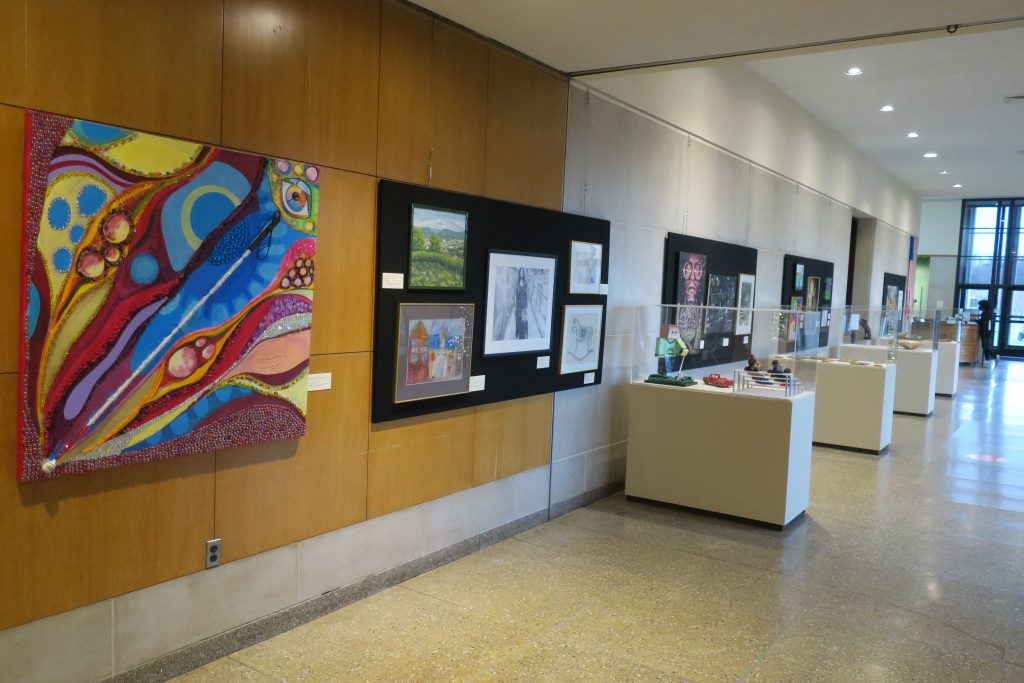To ensure gift delivery by 12/25, please place orders via UPS shipping no later than 12/17.
CloseUtilizing Access Technology for Blind and Low Vision Accessibility in the Evaluation Process

The use of technology in the classroom has changed vastly over the years. Finding the best tool or device to meet a student’s needs is a challenge that all teachers and practitioners in the field of blindness and low vision face. We interviewed educator Sharon Lyttle to find out how the book Access Technology for Blind and Low Vision Accessibility has aided in the evaluation process.
Meet Sharon Lyttle
Sharon Lyttle is originally from England and has always worked with children. In fact, she started with infants and toddlers because she loves babies. Sharon went to school in England to become a nanny and was a nanny when she moved to the United States. Then, she became intrigued when working with children with special needs. She decided to pursue a degree in Special Education and is dual-certified in Special Education and Early Childhood, which led to her working with pre-k, interrelated, and moderate intellectual students. When she was teaching in a special education classroom, she had a student who was blind. Sharon became interested in the work of a teacher of the visually impaired (TVI) after seeing the student work with a TVI. Eventually, she went through the master’s program at Salus University to become a certified TVI. She was an itinerant TVI for 11 years and worked part-time as a Parent Advisor with Georgia Pines. She is now an Educational Program Specialist at Smokey Powell Center (SPC) for Assistive Technology at the Georgia Academy for the Blind, which provides outreach services free of charge to any student throughout the state of Georgia who is blind.
Sharon’s Thoughts on Access Technology for Blind and Low Vision Accessibility
Q: Tell us a little bit about yourself and your role in the field.
A: In my role, as an Educational Program Specialist, I assist the Low Vision Doctor with Low Vision Evaluations (LVE) for students, and I am involved with the committee that organizes professional learning for TVIs, which is called the Georgia Vision Educators Statewide Training (GVEST). Upon request, I provide support for TVIs as well as perform Assistive Technology (AT) assessments for the students. During the COVID-19 pandemic, I learned about this new book through a training Dr. Siu was presenting virtually. My director, Zel Murray, colleague Tara Bowie, and I agreed that we would use the AT assessments from the book because we had to learn how to conduct AT assessments virtually. We came together as a team to choose the appropriate AT templates needed for student assessments.
Q: How do you utilize the book Access Technology for Blind and Low Vision Accessibility?
A: We use the book for conducting our Assistive Technology assessments. I love the way the book gives several options without being too specific. For SPC, the documents we require prior to a LVE are the Individualized Education Plan (IEP), Functional Vision Assessment (FVA), and Learning Media Assessment (LMA). As a team, we review the student’s information and interview the TVI, parents, students, and other team members virtually or in person. Appendix B (pages 359-374) has great guiding questions so that the assessment/interview is very thorough. Appendix 9.1: GPAT AT Consideration Process Guide is great for determining where the student is experiencing difficulty completing instructional tasks. In addition, Appendix 9.4 Needs Assessment Template, can also be used as an assessment, instead of Appendix 9.7. It depends on your preference.
Q: Do you have any other favorite parts of the book?
A: I specifically like using Appendix C – Appendix 9.7: Assistive Technology Recommendations Checklist. The checklist ensures that the assessor reviews all of the ways the student might be accessing the curriculum. There are three sections: Section I – Accessing Print Information, Section II – Accessing Electronic Information, and Section III – Communicating Through Writing. It provides information with questions to consider and then provides appropriate recommendations.
Q: What would you share with someone who is not familiar with the book?
A: The original book, Assistive Technology for Students Who Are Blind or Visually Impaired: A Guide to Assessment, was a book that I used while I was a student in the TVI program at Salus University and when I was an itinerant teacher. The new edition is a great book for both new and experienced TVIs and AT Specialists. It will guide you in assessing and determining the AT needs of your blind and low vision students and offer you strategies to help them to access different media using 21st-century technology. It has strategies for incorporating technology goals into the IEP and an IEP Accommodations Tool Checklist. The book also explains the law regarding AT, training, resources, and more, which can be helpful when meeting with the IEP Team. The Access Technology Trial Summary Form (Appendix C: 9.5) is used to collect data and determine if that device is the right fit for the student.
Q: Are there any other tips you would like to share about utilizing the book?
A: I can’t express it enough; this book is just a great resource with practical information and forms. My tip for utilizing this book is to become familiar with using the appendix section. I would highly recommend this book to TVIs and AT professionals who need information about AT for blind and low vision students. There are a lot of assessments out there, but we need to know what is needed specifically for students with visual impairments. This book provides that.
You can purchase Access Technology for Blind and Low Vision Students through our website.
Share this article.
Related articles

The Monarch Supports a New Era of Visual Learning
80% of learning is visual, and teachers often tailor their lessons accordingly. This often presents barriers for students who are...

APH Brings Inclusive Arts Exhibit to Huntington, WV
On December 7, 2021, APH Huntington, a program of the American Printing House for the Blind (APH), celebrated the work...
